Aloha and welcome, everyone,
When you live somewhere with real seasons — instead of the always-sunny beauty of Hawaiʻi — the view outside your window changes in ways you can really feel. Today is one of those cozy, rainy autumn days here, with trees slowly shifting into gold, deep red, and warm orange. I still miss the blue sky, the mountains, and the palm trees I used to see every morning on Kauaʻi… but even these quiet fall colors have their own kind of inspiration.


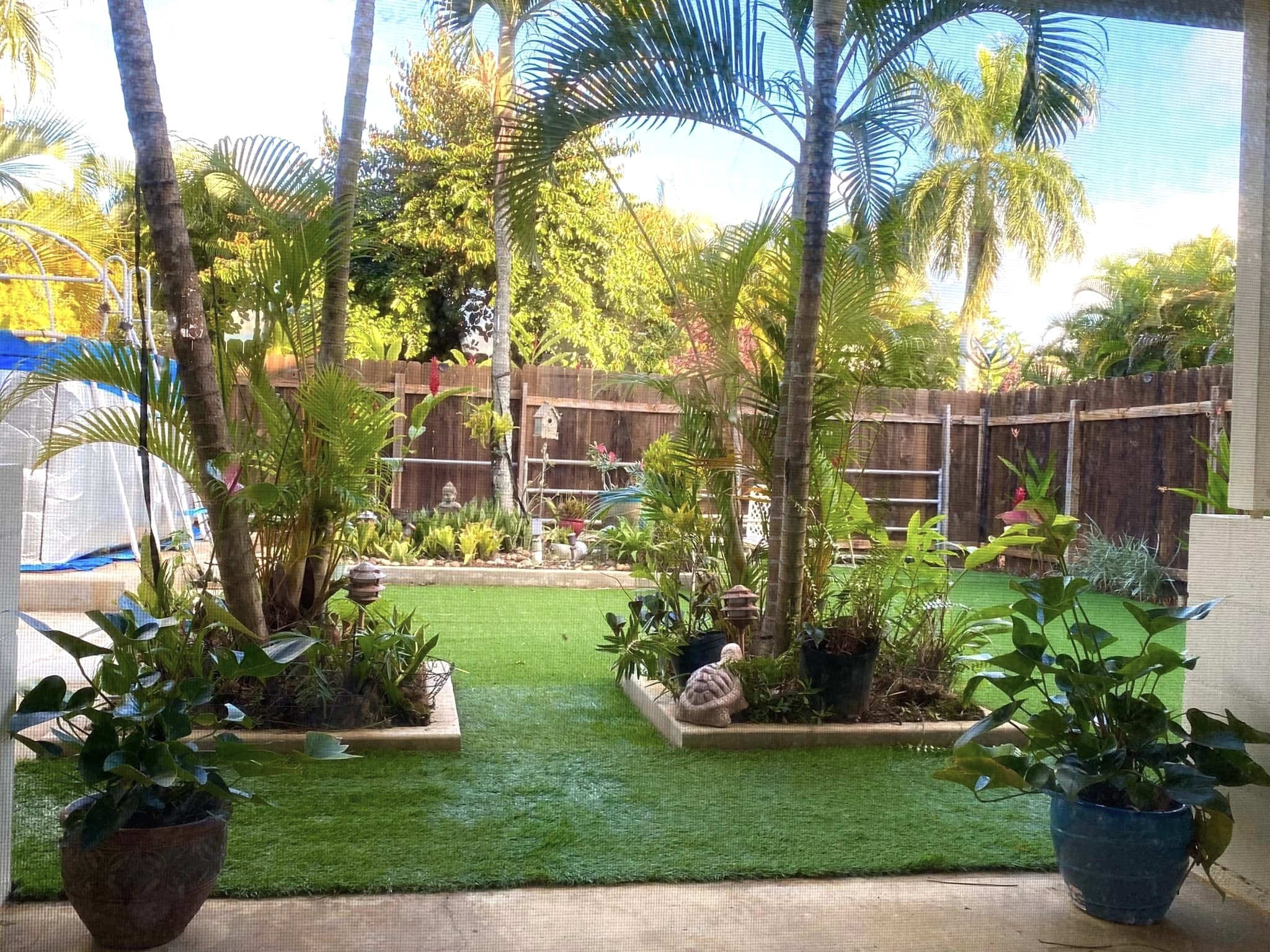
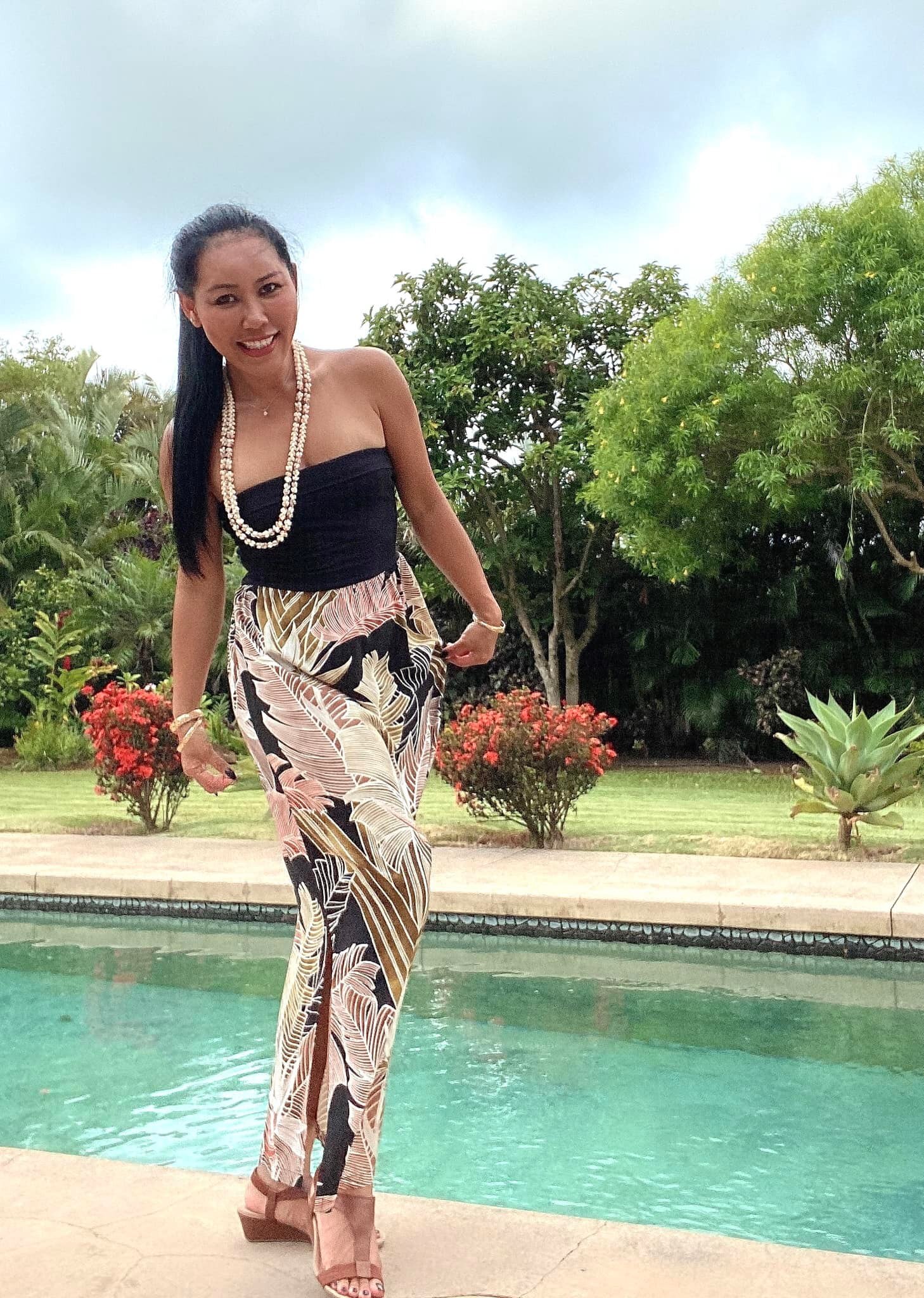
Since I’ve been writing a blog about what a Double-double Pikake looks like when it’s created with Momi shells (モミシェル), today felt like the right moment to finally sit down and begin Lei 2005. The colors, the calm, the soft rhythm of the rain — everything aligned. Sometimes inspiration doesn’t come loudly; it just settles in gently, inviting you to create.
Selecting the Colors of Momi Shells — Beginning With the Vision
The very first step in creating this Double-double Pikake (ダブルダブル・ピカケ) lei is choosing the right Momi shell colors. Before the vision even begins, the colors have to feel right in your heart — that’s where the creativity truly starts.
For Lei 2005, I began with the rare and very special Momi ʻŪliʻuli (blue Momi shells). I would describe this particular shade as a medium blue. There are Momi shells that come in an even darker, deeper blue, but those are extremely rare and very difficult to find in matching sizes. This medium shade is still beautifully special, and it creates a lovely foundation for the lei.
If you are still learning about Hawaiian shells used in Niʻihau shell jewelry (ニイハウ シェル ジュエリー), you can ➡️ click here to read What Are Momi Shells, and to explore my newest blog about Momi ʻŌnikiniki, the spotted varieties.
For this lei, I selected a combination you rarely see all together:
• blue Momi ʻŪliʻuli
• golden Momi Lenalena
• black-spotted Momi ʻŌnikiniki ʻEleʻele
• light-spotted Momi ʻŌnikiniki ʻĀhiehie
• strong-striped Momi Kahakaha Ikaika

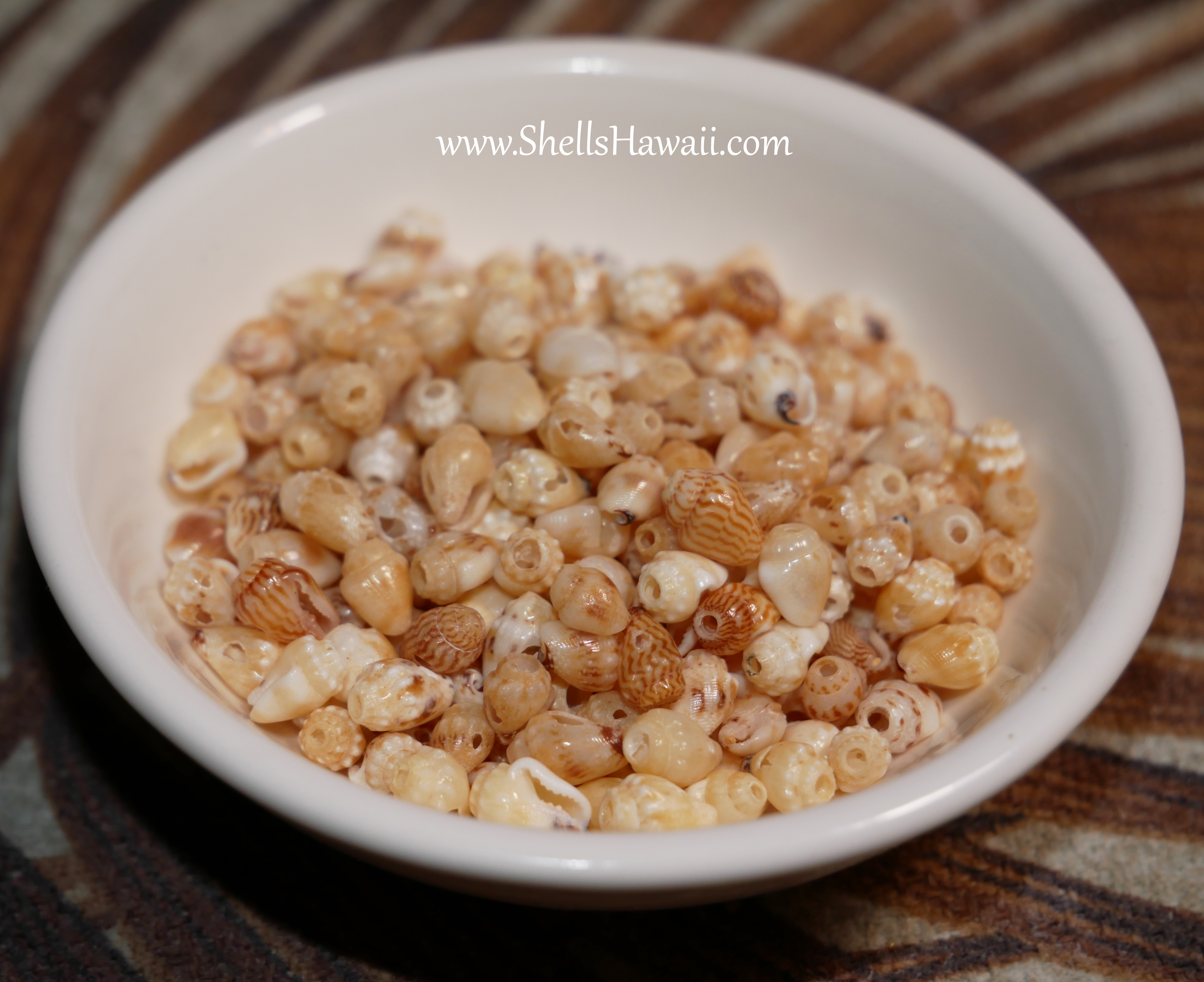
These shells took years to collect. When they finally come together, their colors create a deep, lively, meaningful palette — the kind that makes a lei truly one of a kind.
And because this blog series will be exploring the full Momi color family, we’ll be learning more about ʻŪliʻuli (blue Momi) in an upcoming post. There is so much to appreciate about this unique color, so please stay tuned❤️.
Only after all the shells are prepped do I begin sorting them.
Sorting the Momi Shells by Size — My S, M, L Method
Once the shells are cleaned and poked, I am sure most of your shell collection will be mixed in size. Now it’s time to sort them. Most of the time, there is no special tool for sorting Momi shell sizes (モミシェルのサイズ分け).
Here is how you can sort the sizes of your Momi shells:
• Spread out a small handful — not the whole pile.
• Pick out the biggest ones first → L group.
• Whatever remains but isn’t large → M group.
• The smallest ones naturally become the S group.
This simple step makes everything smoother later.


Paring the Momi Shells — in Size, Shape, and Length (Why This Step Is Essential)
After sorting the shells into S, M, and L piles, the next step is to take the L-size pile and spread the shells across the table, lining them up in neat rows. This is the moment when the Momi shells truly “introduce themselves.” Once they sit side-by-side, the details that matter — size, length, shape, curve, and thickness — become clear. Every one of these tiny differences affects how your lei will look once it is strung.


By lining up the shells in rows, you can clearly see their true characteristics and pair them into groups of two or four with much better accuracy. Doing this step correctly helps with:
• the true size — making it easy to match shells so each cluster sits evenly
• how tall or short each shell is — preventing bumps, dips, or string showing
• the shape — round, narrow, or oval, which affects how shells tuck into a cluster
• the curve and thickness — helping you avoid shells that lean the wrong direction
• how each shell naturally sits when tied — allowing the spiral to turn smoothly and consistently
Once the shells are lined up, it’s time to begin pairing them into clusters. For a Double-double Pikake lei, you need four perfectly matched shells for each cluster on each side. When the shells are prepared this way, the rest becomes much easier — pairing, tying, shaping the flowers, and keeping the lei beautifully even from top to bottom.
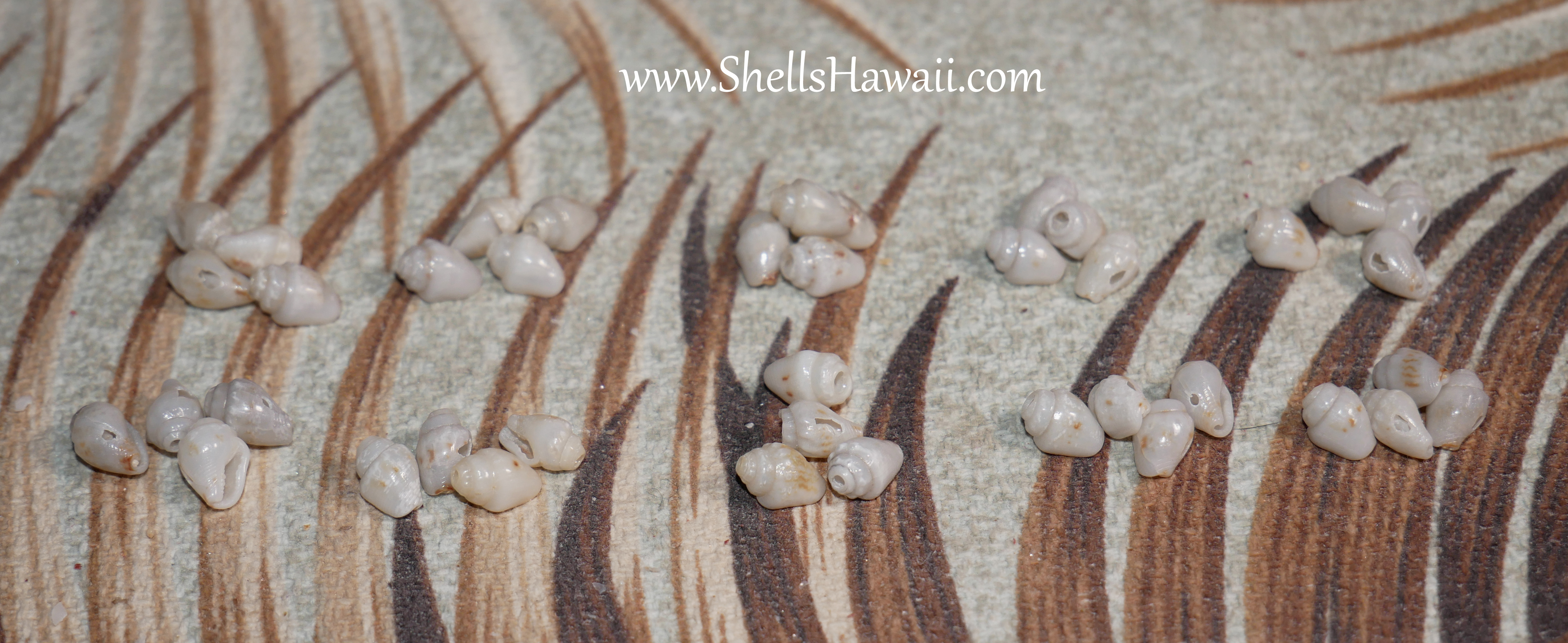
If you find shells that don’t have a match, simply set them aside and move to the next size down. This helps you maintain a balanced and uniform look throughout your lei.
✨ I always double check for size, color, and any cracks during this step. It prevents breakage later and saves you from undoing your work.
➡️ Why pairing identical-size Momi shells is so important in Niʻihau shell jewelry
Matching shells to identical size is one of the foundations of making any Niʻihau shell jewelry. Proper pairing creates balanced clusters, keeps the lei, earrings, or bracelets looking uniform, and minimizes loose spots or visible string.
If you want to understand Pikake structure more clearly, you may enjoy my blog What Is the Single Pikake Style, Doube Pikake style where I explain how these clusters are formed and how the traditional style is built.
And for any beginners who dream of creating this Pikake-style shell lei one day, I hope this part of the blog helps you feel more confident and excited about your journey.
Begin Stringing the Momi in Double-Double Pikake Style — Working From the Middle
So, after I finish pairing the Momi shells into groups of four from the L-size pile, I get my strings ready. For this lei, I plan to make about 18–20 inches, so I prepare four strings at 75" each. This gives me around 37–38 inches of working length on each side. Over the years, I’ve learned how important extra string is when creating double-double Pikake. Too much string is easy to work with — but too little will drive you crazy. (And yes, I’ve done that to myself many times!)


I always begin from the center⤵️. Starting from the middle keeps both sides even, balanced, and growing at the same pace. For the double-double Pikake style, this helps the spirals and clusters stay consistent, which is so important for creating a clean and beautiful lei.
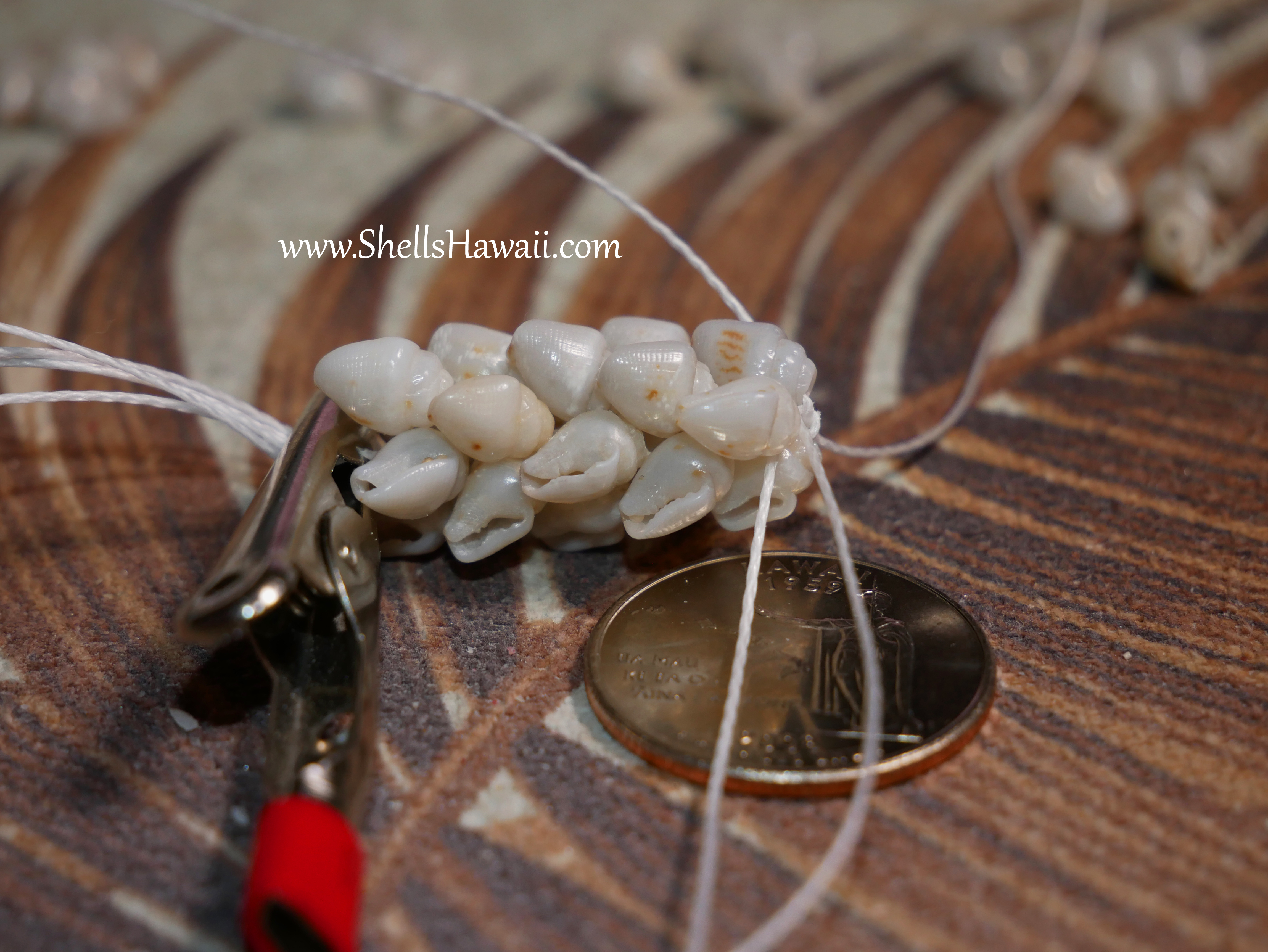
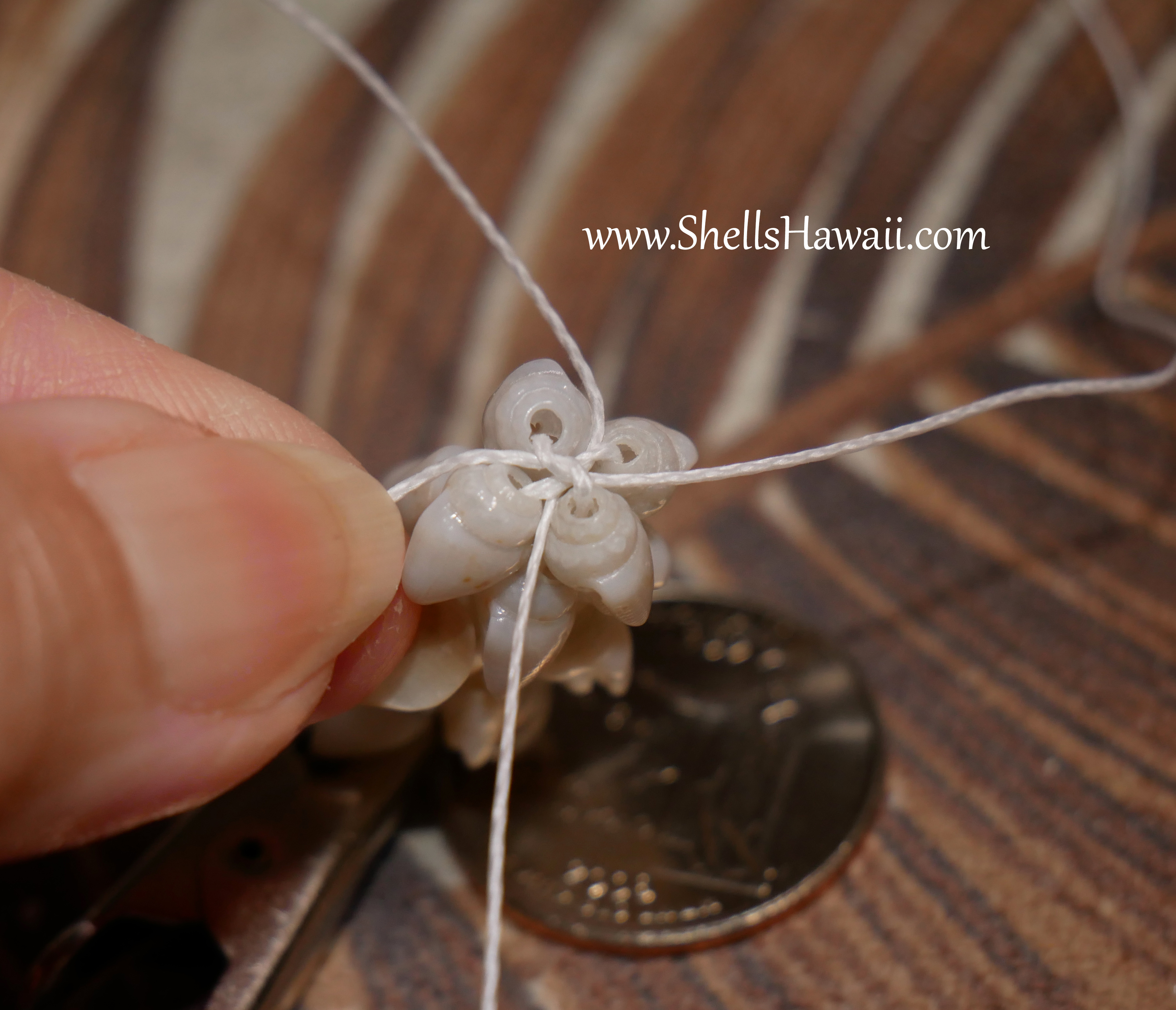
When I start stringing, I begin with the largest size set of shells and finish one side first. Then I switch over and finish the other side. After completing both sides with the L-size shells, I repeat the pairing step using the shells from the M-size pile — pairing them carefully and continuing the same rhythm. I keep repeating these steps, size by size, until I reach the length I prefer for the lei.

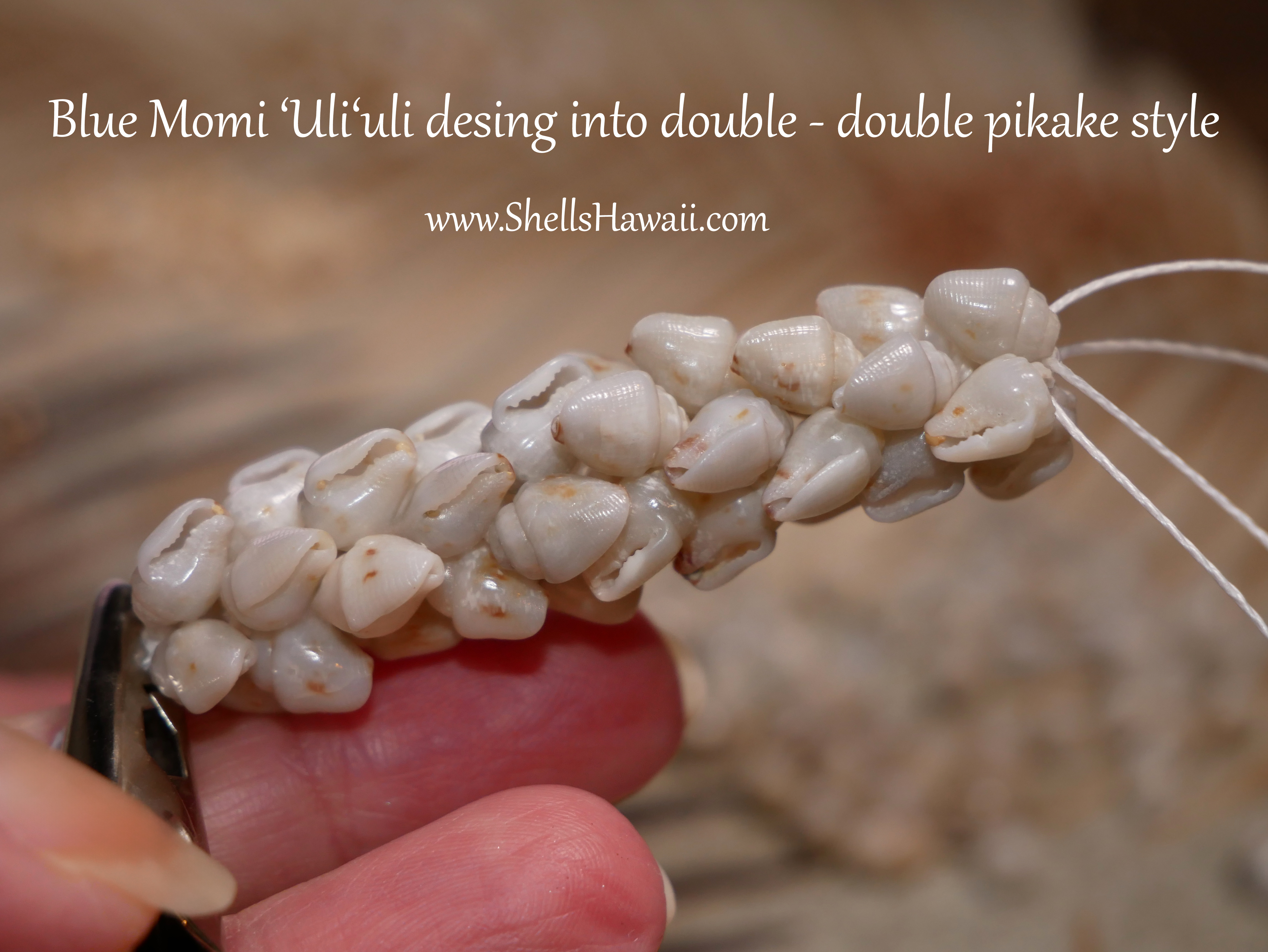
Most of my designs begin with a vision based on the shells I have on hand. I need to see how the pattern forms as I go. If the idea in my mind doesn’t match what the shells are showing me, I adjust right away — changing the size, the flow, or the rhythm while I string.
✨ This is one of the most important parts of my creative process:
I string, I look, I adjust, and I continue.✨
Between each step, I stop to check — and then double check — that the shells are sitting correctly, the spiral is clean, and no string is showing before I add the next cluster.
In certain designs, a little bit of string will show — that’s normal for many Niʻihau shell styles and techniques. But if you notice the string showing a lot, that means something is wrong. Stop, find the problem, and fix it. When the shells are the correct size and shape, and the puka is placed correctly, they fall into the pattern naturally.
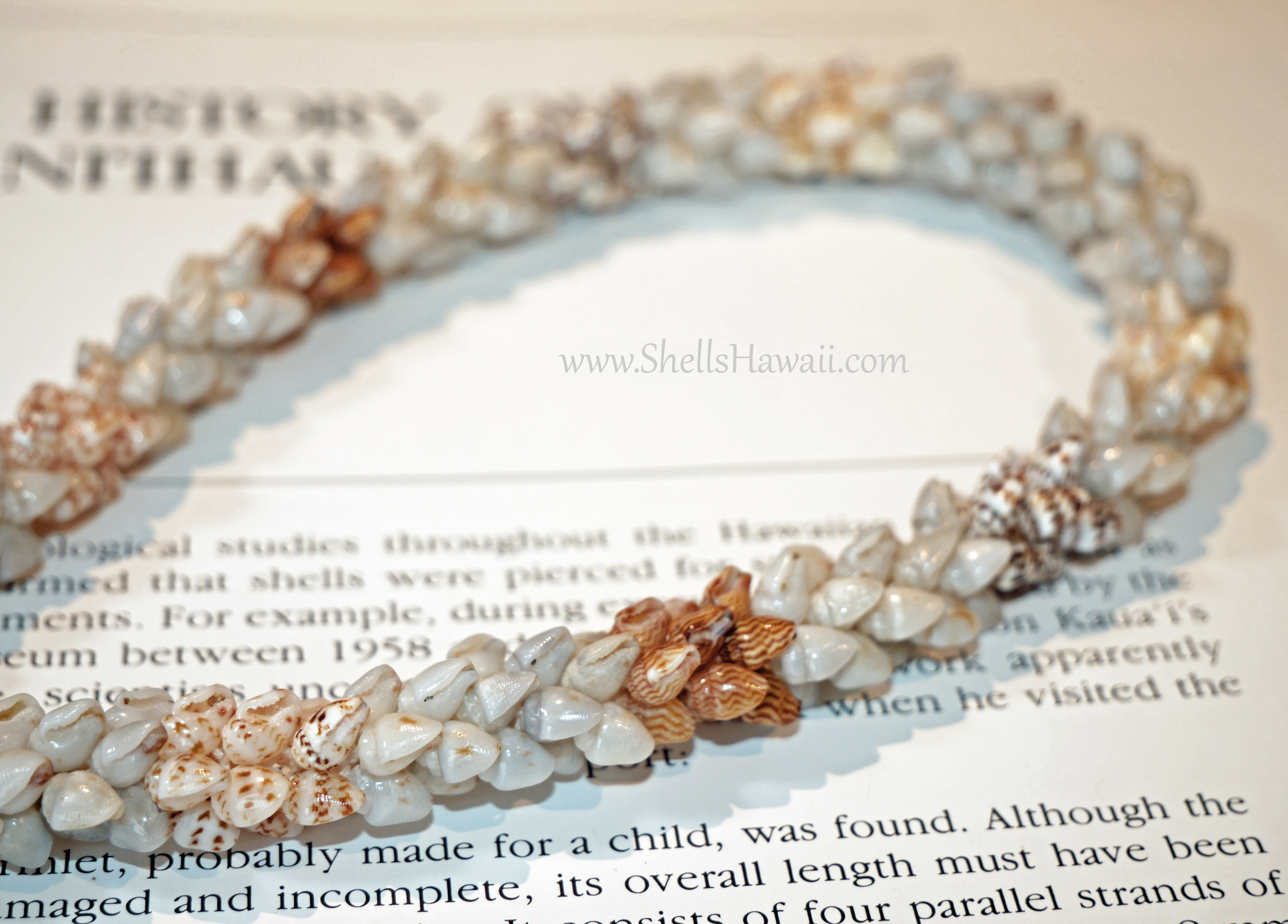
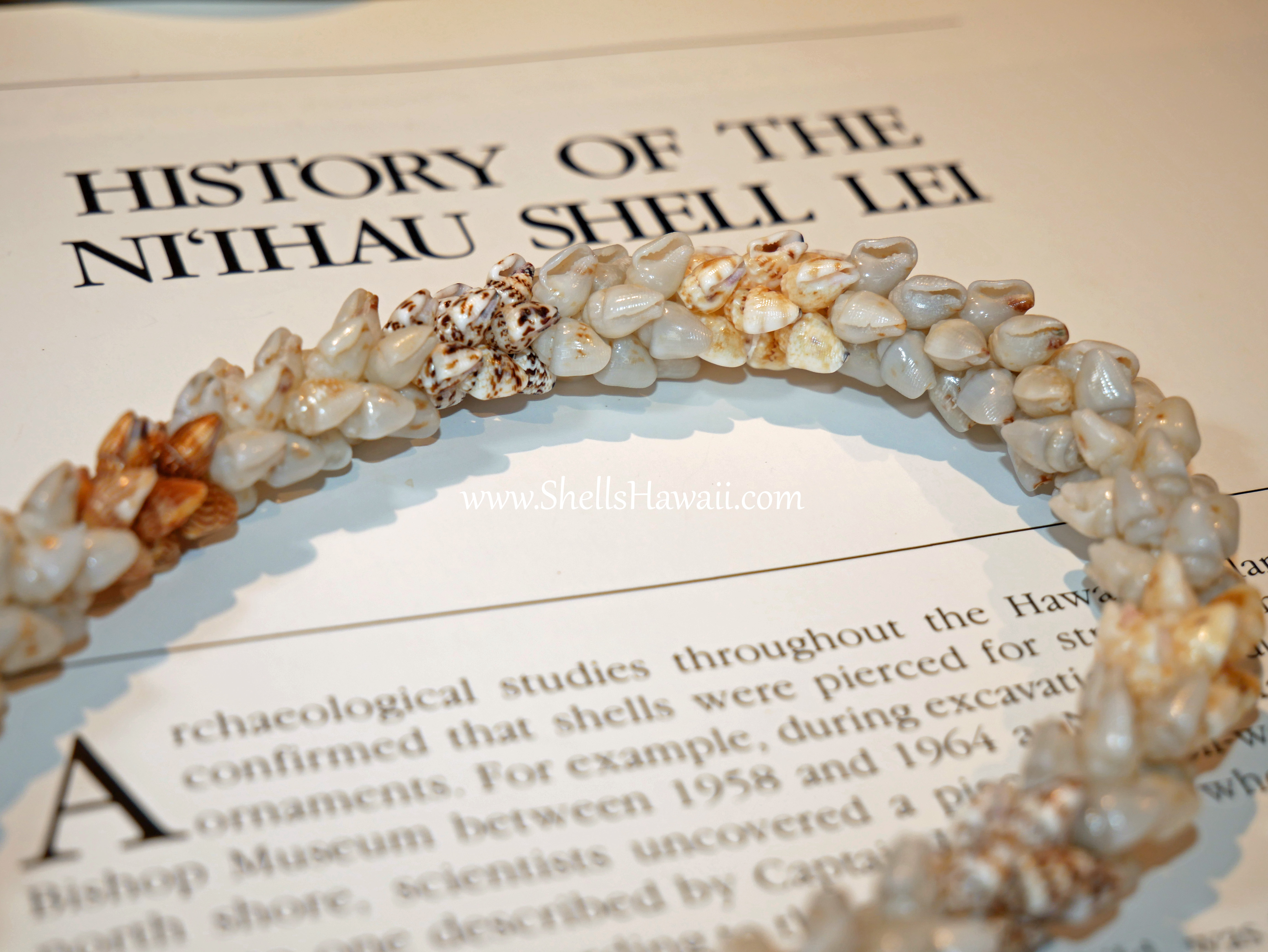
Working this way allows me to watch the lei take shape right in front of me, and that feeling means everything. It inspires me, motivates me, and fills me with happiness as the design grows — like a small reward for all the patience and love poured into each piece. When the vision in my heart starts to appear one shell at a time, it reminds me why I cherish this art so deeply.
Adding the Clasp — How I Finished My New Double-Double Pikake Momi Shell Lei 2005
After all the detailed work — selecting colors, sorting sizes, pairing shells, stringing from the middle, and checking every cluster — I finally reached one of my favorite steps: choosing the clasp. For this lei, I decided on beautiful brown granulate cowrie shells. Once they were cleaned, prepped, and set with epoxy, everything came together even better than I imagined.
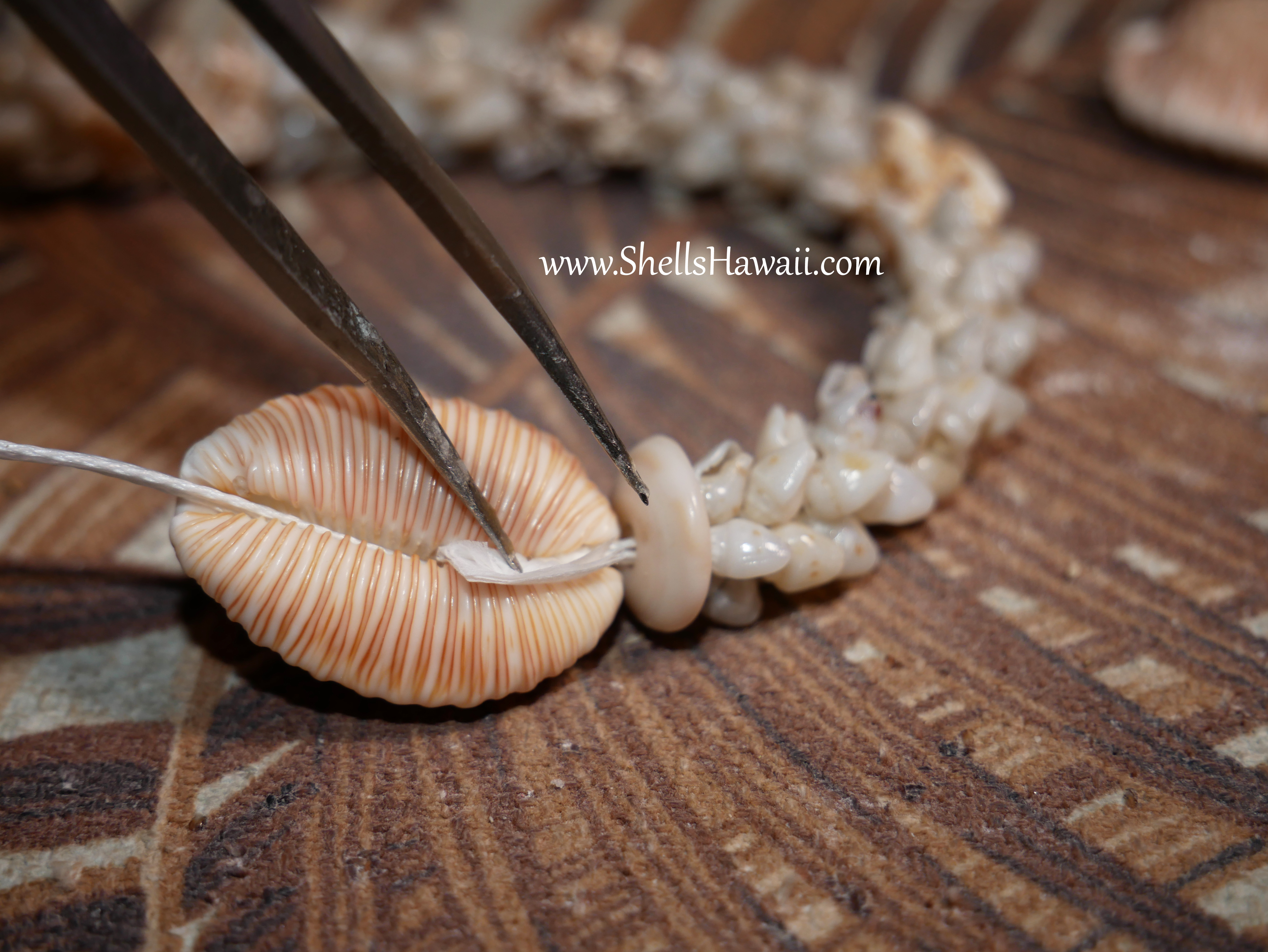

Originally, I planned to keep this lei around 18–20 inches. But as I continued stringing and seeing how the rhythm was forming, I felt it needed to be just a little longer. So I added a few more sets — and honestly, I think it was meant to be this way. The extra length made the lei look even more balanced and elegant.
The moment I added the clasp and saw the lei fully completed… it made me truly happy. The shape, the balance, the color pattern — everything felt right. Sometimes the final result becomes even more beautiful than what you imagined at the beginning, and this was one of those times.
In future blog ➡️ I’ll be sharing a full, step-by-step about how to attach the clasp and hook using double granulate cowrie shells — including how to keep the clasp balanced, how to prevent the shells from collapsing into each other, and how to make the ending look neat, tight, and strong.
✨ If you would like to see this lei ⤵️ in my shop, Please click here:
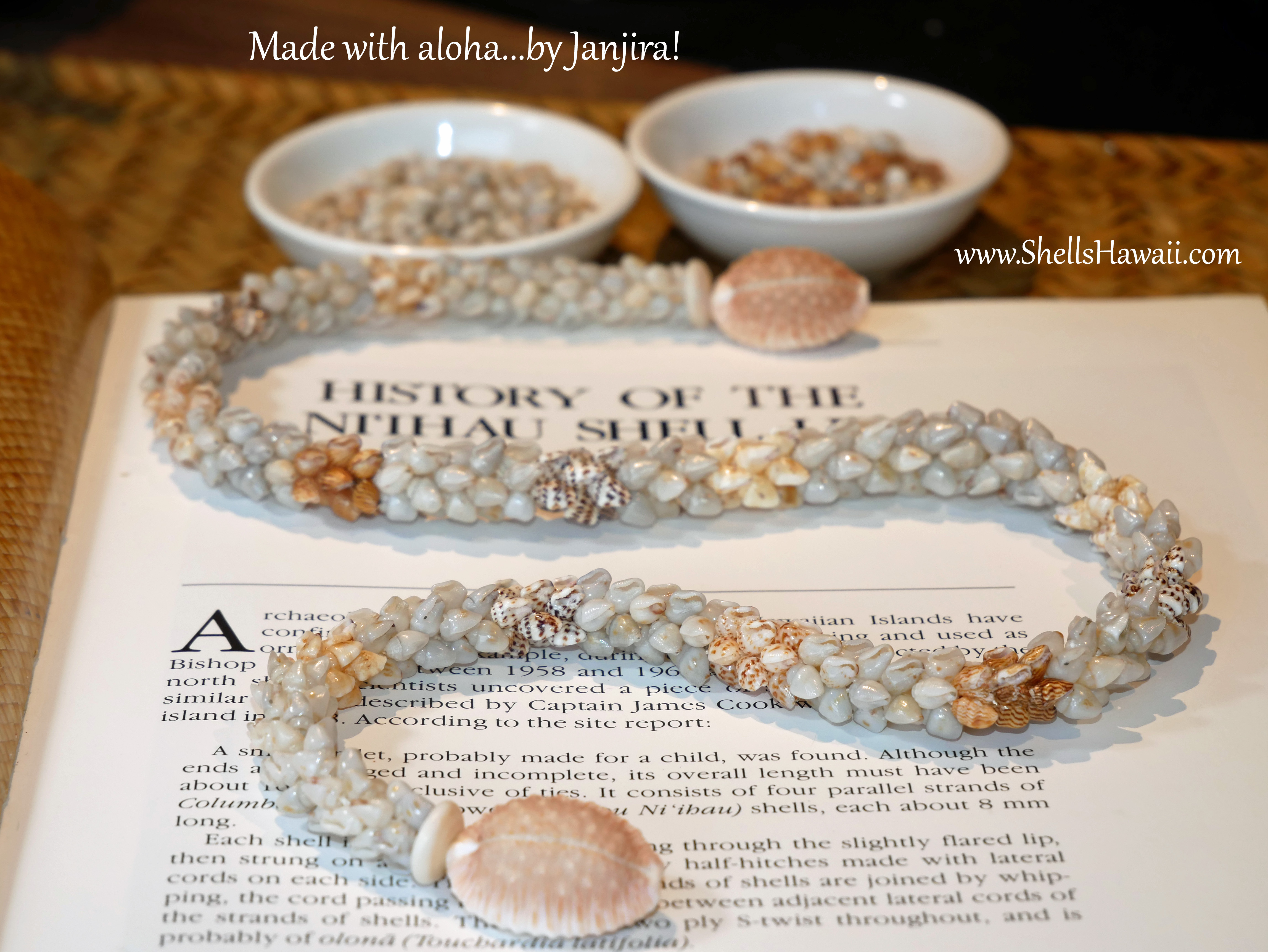
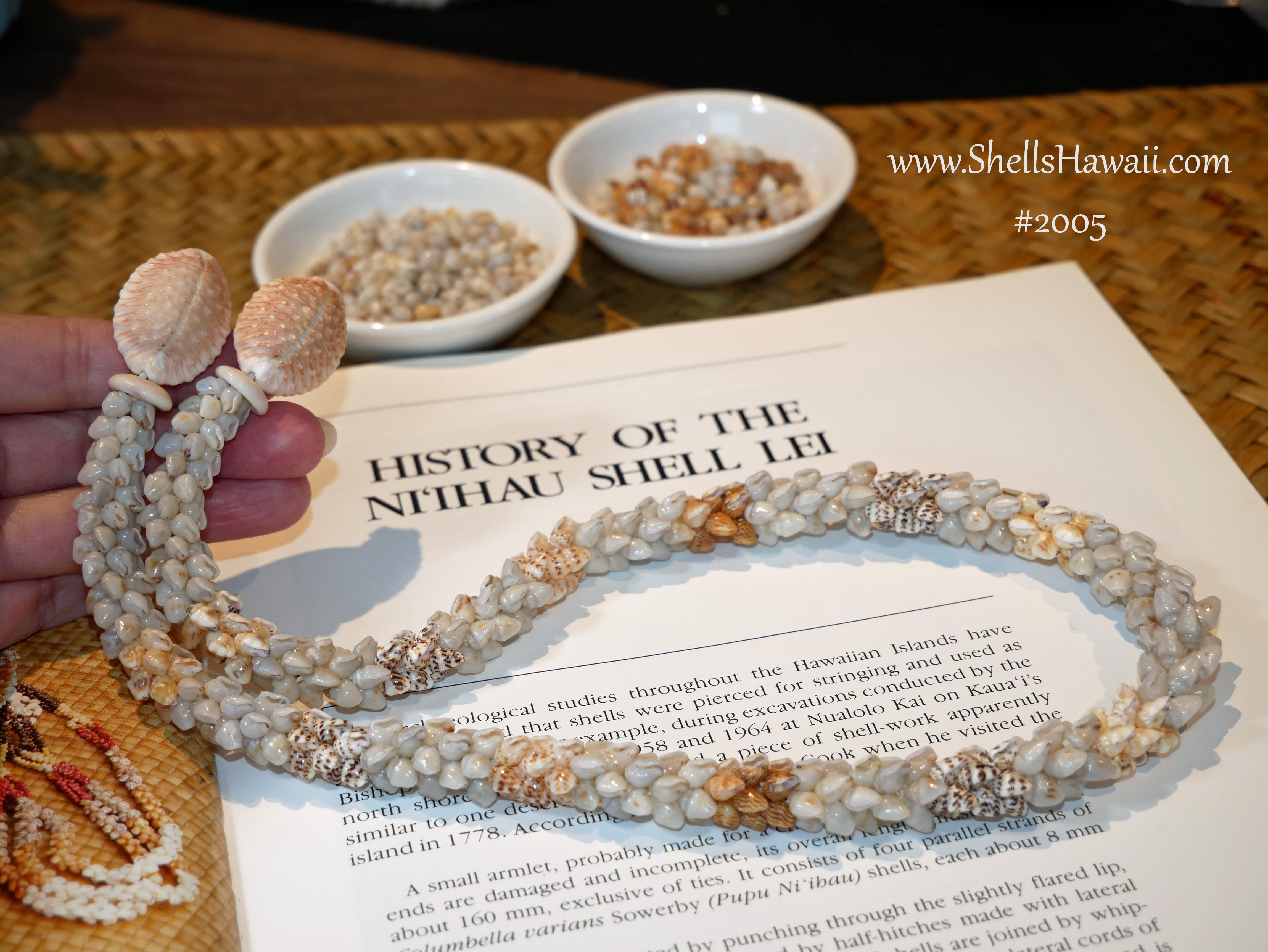
Thank you so much for spending this time with me behind the scenes. I hope this inspires you to keep creating, keep learning, and keep enjoying this beautiful Niʻihau shell art from your heart. If you have any questions or need guidance, you can always contact me — I’m happy to help.
➡️ Learn how a Niʻihau Double-double Pikake lei is made with authentic Momi shells. A detailed guide for Hawaiian jewelry lovers, beginners, and creators (ニイハウシェル).
 USD
USD

